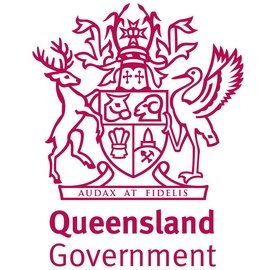In the early 2000s, educators from America and other countries flocked to Finland to learn the secret of its success. The country had come out at the top on the PISA, an international test given to 15-year-olds.
Many of those 'edutourists' came back believing that Finland’s impressive performance was due to certain features of its education system – features that should be replicated in other countries if they wanted similar success.
There were, for example, no standardised tests. Finnish schools and teachers enjoyed a great deal of autonomy, and teachers were highly respected.
As it happens, the features these educators seized on to explain Finland’s success coincided with their own pre-existing beliefs about what works in education. And the edutourists missed some important 'details'.
Essentially, what they saw was Finland beginning to relax what had been a highly centralised and prescribed system of education. As British education researcher Tim Oates has explained in a paper called Finnish Fairy Stories, the basic error was to assume that what they saw happening in the early 2000s was responsible for the scores of 15-year-olds in the early 2000s.
Instead, they should have looked to the previous decade, when those students were being educated. Even in 2000, Oates says, there was more central control and less autonomy that observers believed.
In the mid-2000s, Finland’s PISA scores began to decline significantly. It’s not clear why, but it’s possible that the relaxation of control that edutourists seized on as the secret of the country’s success was actually responsible for the drop in scores.
Then, in 2017, Finland adopted a 'phenomenon-based learning' approach that emphasised student inquiry – another feature that delighted many American education commentators.
It’s a longstanding tenet of American education orthodoxy that students should be in control of their learning as much as possible, with teachers relegated to the role of facilitators.
But at least one Finnish education expert criticised the phenomenon-based curriculum for “shifting too much responsibility onto children regarding their own learning".
Mr X Goes to Finland
As interest in education reform has died down in recent years, so has edutourism to places like Finland. But one education blogger made a recent pilgrimage to see what was going on.
I don’t mean to single out this blogger, because there are no doubt many other American educators and commentators who could have come away with the same impressions. But for anyone who doubts the veracity of this account, here’s a link to the blog post.
Mr X, as I’ll call him, is taken on a tour of schools and finds an “orderly, active hum, the kind that emerges only when everyone knows one’s role, responsibility and contribution.” Sounds good so far.
He’s also told by his Finnish host – in a warning Finns have been issuing for a while, to no great effect – that “a Finnish system doesn’t work in any school outside Finland.” The whole system works together, and rigorous teacher preparation, of a kind that simply doesn’t exist in the U.S., is a crucial part of it.
But when it comes to actually observing classrooms, Mr X is seriously disappointed. Despite the rigorous teacher prep, “almost every classroom lesson I observed was ... OK. As one of my traveling colleagues said, ‘I feel like I’ve seen this movie before.’ And that’s because we have seen it before – teacher-driven, content-heavy, ‘sit and get’ instruction".
Apparently, Finland has backed off its 'phenomenon-based' curriculum, at least in the classrooms Mr X visited. But what about that “orderly, active hum” he’d observed? Could that possibly be attributed to the fact that – as he put it – everyone “knows one’s role,” and that the role of the teacher is to teach and the student to learn?
Mr X doesn’t go there. Instead, he remembers that “the goal of the Finnish system is equity.” In other words, he writes, “Finland’s goal is not to spark the creation of spectacular schools – it’s to ensure an entire country of good ones".
That seems like a worthy enough goal – and it would be terrific if we could achieve it in the U.S. But it’s not enough for Mr X.
Instead, he finds his “Finnish miracle” in a recently constructed library in Helsinki. Described on its website as “a meeting place, a house of reading, and a diverse urban experience,” Mr X calls it possibly “the most spectacular model for the future of learning that I have ever seen,” the “ideal ‘school’ of the future".
Whereas Finland’s schools “are still characterised by a culture of teaching, [the library] stands as a beacon of learning – self-organising, emergent, and overflowing with the life force of its inhabitants".
Schools without teachers?
The library, known as 'Oodi', certainly lacks one standard characteristic of a school: teachers. It represents the apotheosis of the longstanding progressive education ideal: a place where students can be left to their own devices to construct their own knowledge, or try to.
Using Oodi as a model for education, Mr X writes, would require “focusing less on pre-conceived ‘lessons,’ and more on carefully-constructed conditions that can spark curiosity, creativity and awe".
It sounds appealing, but any country following that route is not only likely to find itself at the bottom of the PISA heap. It’s also likely to do a profound disservice to many of its children, particularly those from less highly educated families, who depend on teachers to impart information they don’t already have and to systematically build their knowledge.
Of course it’s possible for explicit, teacher-directed instruction to be soul-crushing for students. But it certainly doesn’t have to be, and there’s no indication from Mr X’s account that the students in the schools he visited felt their experience was oppressive.
When teachers get good training – of the kind apparently provided in Finland – they know how to engage students in the content they’re teaching and guide them to think about it deeply and analytically.
That’s not oppressive. In fact, it’s the key to enabling students to reach their full potential. In that sense, it’s liberating.
This article was first published on Natalie Wexler's blog, Minding the Gap. Read the original post here.















